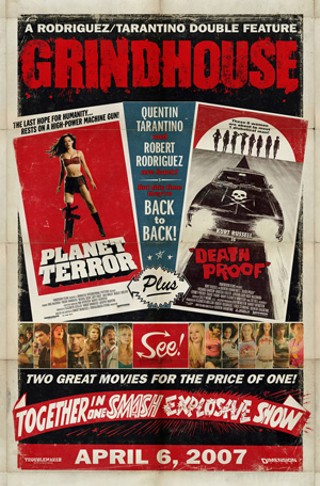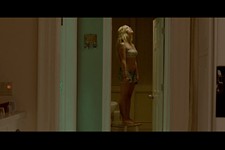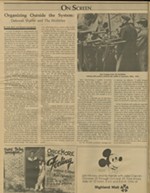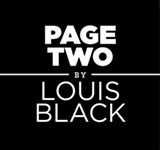The Cinema of Possibilities
Low budget or big, the energy and imagination of the grind-house circuit is reborn in Robert Rodriguez and Quentin Tarantino's tribute
By Louis Black, Fri., April 6, 2007
Grindhouse, as you probably know, is a celebration of a certain kind of cinematic fare and the theatres that showed it. Robert Rodriguez and Quentin Tarantino each directed a feature and asked a few fellow directors to make trailers for imaginary grind-house films. The reviews that the three-hour finished product receives should prove interesting. Many critics will probably focus on the tribute theme, deciding whether they like or dislike either or both efforts while cheerfully accepting the ghettoized meaning of the term "grind house" itself.
Tarantino's previous film(s), Kill Bill, is the story of a woman with an overriding focus on violent revenge. She comes to realize that such vengeance is not only its own punishment but the ironic final twist of the knife of the act being paid back. By early 2004, when Vol. 2 was released, the United States military was beginning to realize it had stepped in quicksand after an initially swift invasion of Iraq. Yet reviews of the film – whether negative or positive – pretty much agreed it was about nothing. Ever since going a bit overboard in discussing Pulp Fiction, the majority of American critics have been hard at work underestimating Tarantino's work. "Death Proof," as part of Grindhouse, will probably also be treated as a kind of cinematic cotton candy.
It's been just about a decade since the Austin Film Society presented the first QT Fest, where during 10 days, the director introduces about 40 films from his own collection. The screenings have included double bills, triple bills, all-nighters (horror films), as well as kiddie matinees on the weekends. Most of those in attendance are film geeks and addicts whose drugs of choice are exactly the kinds of films Tarantino shows. They might not know all of them – Tarantino's taste is expansive without known boundaries – but they are at least familiar with the genres and categories the films fall into.
Still, a growing number of audiences over the years have shown up not knowing what to expect. They come just because it is Tarantino in attendance or because his introductions are historically accurate, usually brilliant, and energetically delivered. Some are there because they've heard that other celebrities are often in the audience, while others have been dragged along by friends.
Invariably, as early as the first film on the first night but never later than the second or third on the next, one can sense a certain puzzlement affecting part of the audience. Probably even most devoted fans of Hollywood, foreign, and arthouse films would not get these movies: The Glory Stompers; Dirty Mary, Crazy Harry; Jackson County Jail; Bucktown; Ghetto Freaks; Freebie and the Bean; The Lady in Red; and White Lightning. Although unspoken, you can almost hear questions floating through the theatre: "Is he kidding, or is he insane?" "What's even good about these movies, much less great?" "Is this a camp attitude, the movies so bad the audience thinks they are good?" "Do they really like these films, believe they boast exceptional qualities and have aesthetic strengths to recommend them, or are they sycophants?" Those afraid of being unhip usually stay silent, though it is not uncommon to hear a conversation with just those questions in the parking lot after the movie. The gist of it is usually that rather than being of merit, these movies have no clothes.
There is not one response, because grind houses did not offer and Tarantino does not show just one type of film; nor are the films restricted to even a contained general category. Although QT Fest programming runs toward renegade rather than mainstream cinema, there are plenty of Hollywood releases. Just not the ones everybody else takes seriously.
The fascination of these films, most of the time, includes or at least begins with their theatrical intentions: Horror films are scary, women-in-prison films intense; motorcycle films range from modern Westerns to overly talkie moral dramas, and gangster films rip through any generic rules. After those are considered, the pleasures are largely and specifically cinematic. They are the pleasures of both pushing the envelope on accepted cinematic language and counting on the audience's familiarity with genres to use a kind of narrative shorthand as a way of expanding a film without spending money. Sometimes there are great performances or a taut script, but more often it's the very ambition and daring of the films plunging ahead. Neither anchored by the conceptual structure of novels and theatre nor respectful of established Hollywood styles, these are movies!
They appeal in a rich offering of other ways. There is the unassuming eloquence of guttural primitive filmmaking. There were new genres being regularly pioneered as well as substantial innovations in existing ones. Grind houses featured foreign genre films, the early works of important filmmakers, and even the most unexpected kind of chances taken by crazed street visionaries. Regardless, most mainstream filmgoers would find little entertaining about even the best of them.
With their homage, however, Tarantino and Rodriguez have made not only two truly great movies but also probably the two most across-the-board acceptable in the history of grind houses.

Once, during a discussion among a group of film graduate students, I was arguing that Russ Meyer, the king of softcore filmmaking, was one of the great editors in film history. This has to do with Sergei Eisenstein's theories of cinema. He believed in editing discordant images together in the flow of the film to create a "montage of attractions": odd, striking juxtapositions constructed with one shot or shots (thesis) followed by a disparate shot(s) (antithesis), which together created a unique meaning (synthesis). Eisenstein did this with close-ups of people, shots of stone lions and of men shooting in the Odessa Steps sequence of The Battleship Potemkin. Meyer did it with a nude in a headdress jumping around on a sofa in the wilderness intercut with scenes of a dressed couple in the middle of an emotionally intense argument in Cherry, Harry, and Raquel. Looking around as I talked, I realized that those listening were smirking, making look-at-the-nut-go-off-again faces that unfortunately were not an uncommon reception to my thoughts at the time.
As you read this piece, I'm sure many of your faces will bear a similar look. This is neither a history of the grind house nor an attempt to offer an annotated list of great grind-house films. Instead, it explores the idea of grind-house aesthetics located in individual films, as well as those created by the juxtaposition of all of the works. The joys of these movies are many, as QT Fest regulars know. Given that so many of the grind-house films are crap and didn't need to be much more, in my experience, though it defies logic, there are still a substantial number of wonderful ones.
Grind house is a generous term having both an industry and popular meaning, but mainly it referred to an inner-city theatre. Most showed double or triple bills. Some stayed open 24 hours a day, showing the same bills over and over. As much or even more than what they showed, they were really defined by location and condition. Among the best-known grind houses were grand theatrical showplaces fallen on hard times; all were in squalid shape becoming ever more run down, as there was never any effort to keep them up. Some of the audience came for the movies, but many others were either there to escape the weather or for clandestine – usually commercial – sexual liaisons.
Grind houses were often part of a greater drive-in movie/exploitation distribution circuit featuring all kinds of films. The range of what was available was impressive, including those great by any standards: Bloody Mama and The Masque of the Red Death (Roger Corman), Terminal Island (Stephanie Rothman), Jackson County Jail (Michael Miller), Vanishing Point (Richard Sarafian), Private Parts (Paul Bartel), Targets (Peter Bogdanovich), Caged Heat and Crazy Mama (both directed by Jonathan Demme), Carnival of Souls (an independent and truly eccentric work by Herk Harvey).
Other films distributed included softcore porn, regional or race-specific stuff (all-black movies, the PreacherMan comedies), and traditional exploitation (Mom and Dad, Sex Madness, Marijuana: The Devil's Weed). There were also unique or extreme genre works, often the output of true eccentrics (including the whole Mondo series of films, Ilsa; She Wolf of the SS; High Yellow; Doctor Butcher M.D., Medical Deviate; the notorious Snuff; and Chesty Morgan of the 73-inch bust starring in Doris Wishman's Deadly Weapons). These circuits were often the only places in the States to offer many European genre works that didn't fit the arthouse template. Until just the last few years, Asian martial-arts films were almost entirely confined to these theatres. Almost always dubbed, they were regularly retitled, often with more attention paid to the other film(s) on the bill than to their actual content. In that vein, a European black-and-white horror film was retitled I Eat Your Skin to be effectively double-billed with I Drink Your Blood.
They are all films that were specifically produced for this circuit and not shown at regular theatres, but a good grind house would show anything, including Hollywood mainstream productions in their umpteenth re-release and art films graced with appropriate titles. Karen Arthur's marvelously creepy The Mafu Cage was re-released as Don't Ring the Doorbell.
Sometimes the films complemented one another: three horror films, a bill of all motorcycle movies, or two Italian gladiator epics. But the bills' logic could often be inexplicable, curated by what was available or just out of ineptitude and active disinterest.
Long ago, my friend, filmmaker Rufus Butler Seder, dragged me to just such a double bill at a Boston grind house. The first film was Bite the Bullet, a Hollywood studio release directed by Richard Brooks and starring Gene Hackman and James Coburn. The female lead was Candice Bergen, which is why we were there, as Seder had a very serious thing for her. During the intermission, I went to the men's room, where three teenagers from the neighborhood harassed me, eventually taking all my money: a quarter. Getting back to Rufus, I started telling him how I was held up in the bathroom.
"Yeah, okay," he cut me off. "But the next movie is great!"
I was feeling somewhat frustrated until I quickly realized that the next movie was truly great. Lightning Swords of Death was the first time I saw or even knew of the Lone Wolf and Cub (Baby Cart) martial-arts films. Now, the six original films in that series are easily among my all-time favorite action movies.

Most grind-house/exploitation films were produced on low and inadequate budgets with all the resulting consequential shortages – from the amount of film stock to quality equipment to talent. In the best of these films, filmmakers overcame these obstacles with unyielding cinematic energy and extraordinary ingenuity. The circuit proved the training ground for a couple of generations of filmmakers. Independent Hollywood studios like AIP and New World regularly produced low-budget exploitation films to play this circuit. Since bookings had more to do with the number of theatres than the quality of the films, profitability was essentially guaranteed if production costs were controlled. These films were often sold by their titles before they even went into production.
The core commercial American releases were often the initial films by such now-established and highly regarded directors, writers, and producers such as James Cameron, John Sayles, Bogdanovich, Demme, Martin Scorsese, and Francis Ford Coppola. These young filmmakers soon figured out that if they kept to the budget and included the expected money shots (car crashes, naked women in the shower, gun battles), they could very much make the films they wanted.
The overriding attraction of all these films is their remarkable energy and unrelenting imaginations, a straight-ahead, pedal-to-the-metal construction, no matter how strange the narrative or unskilled the cast. This was the cinema of possibilities. Hellbent on entertaining audiences, commercially conceived and marketed, they often proved that there is art in the most unexpected of places and that the word itself too often strangles what it should be describing. Many of the films were sleek genre works filled with innovations or narrative achievements as directors struggled to compensate for shortages. Against all odds, these films came into their own, claiming unique identities and pushing film forward.
In the best, imagination contributes more than money and passion more than power, which created a certain cinematic mystique for many of them. Taken together, the importance and influence of the films shown largely at grind houses begins to become apparent.
Obviously, in many cases a lot of what makes them interesting and sometimes even powerful was not done intentionally and was motivated more by commercial considerations instead of aesthetic ones. Many of the filmmakers would out-of-hand reject any serious analysis of these films of theirs, although many of them were serious craftsmen.
Jean-Luc Godard, among others, argued that if a film was produced in standard Hollywood-studio style – invisible editing, controlled lighting, name actors, and so on – the audience would participate in the film the way they always did. Regardless of its content, the film thus reinforced rather than challenged the status quo and dominant ideology. Godard argued for attacking the persistence of vision, willing suspension of disbelief by disrupting the surface and construction of the movie. He did this with jump cuts, sequences edited out of order, characters talking to the audience.
Unintentionally, some of these films are interesting because of their flaws, crevices, and deep cracks, resulting in a form of perversity unbounded by any Earthly logic. More than that, as the films traveled the circuit, scenes would be cut because of what they featured or slices were made where frames had been eaten up.
There were also numerous different edits of some films available. The Fistful of Dynamite I saw in Florida was a very different film than Sergio Leone's original Duck You Sucker released in Italy. New World had versions of its films with either more or less nudity depending on the market where they were shown. In almost avant-garde terms, these films consistently challenged the notion of determined textuality, as so many films with the same title were so different. Bruce Lee only finished five feature films during his life, yet dozens of titles have been released featuring him. Most were these five retitled or recut and retitled. There were also films by Bruce Li and Bruce Le.
Even the weakest of films were of interest, sometimes exactly because of their shortcomings. I once saw a wretched mob movie set in New Orleans, but the filmmakers were so inept they would start filming at the end of a street and 10 seconds later the car would pull around the corner. The real-time durational-cinema aspect of what was a dumb gang film was still intriguing.
Bursting with energy, often overflowing with ideas, frequently disobeying any accepted rules of cinema (either out of courage or ignorance), the best of these films carved their own pathways. In the context of all the different kinds of movies shown on the circuits, normal definitions became meaningless, with delineations such as acceptable and unacceptable, high art and low art, rarified culture and popular culture dying at the doors of the grind houses, if not before. At the end, all that was left was what was up on the screen. The films, themselves. ![]()











